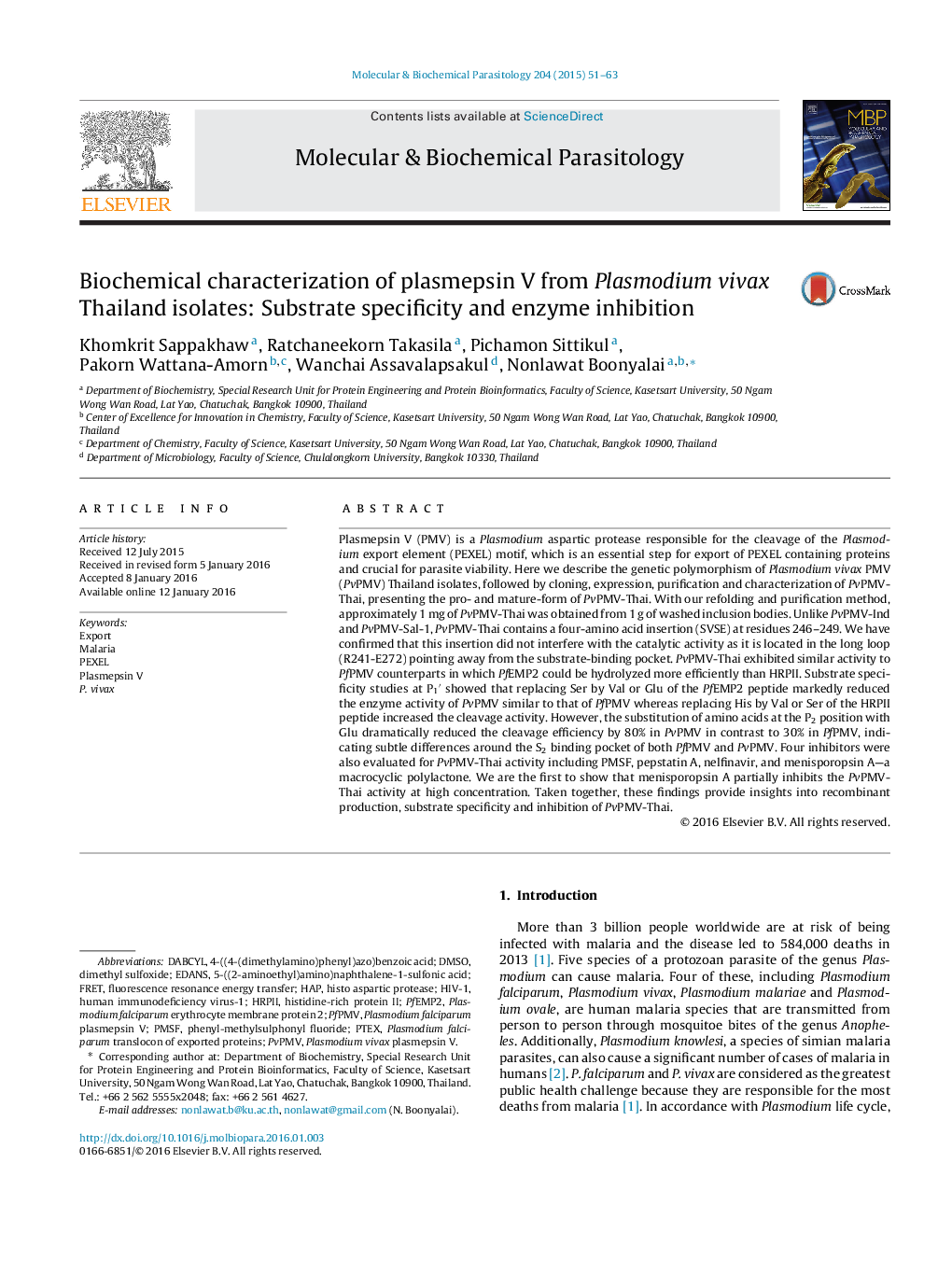| کد مقاله | کد نشریه | سال انتشار | مقاله انگلیسی | نسخه تمام متن |
|---|---|---|---|---|
| 2829719 | 1163279 | 2015 | 13 صفحه PDF | دانلود رایگان |

• PvPMV-Thai contains a four-amino acid insertion (SVSE).
• The SVSE insertion does not interfere with the catalytic activity.
• The negatively charged amino acid at the P2 position of the PEXEL motif is unfavorable.
• Menisporopsin A partially inhibits the PvPMV-Thai activity at high concentration.
Plasmepsin V (PMV) is a Plasmodium aspartic protease responsible for the cleavage of the Plasmodium export element (PEXEL) motif, which is an essential step for export of PEXEL containing proteins and crucial for parasite viability. Here we describe the genetic polymorphism of Plasmodium vivax PMV (PvPMV) Thailand isolates, followed by cloning, expression, purification and characterization of PvPMV-Thai, presenting the pro- and mature-form of PvPMV-Thai. With our refolding and purification method, approximately 1 mg of PvPMV-Thai was obtained from 1 g of washed inclusion bodies. Unlike PvPMV-Ind and PvPMV-Sal-1, PvPMV-Thai contains a four-amino acid insertion (SVSE) at residues 246–249. We have confirmed that this insertion did not interfere with the catalytic activity as it is located in the long loop (R241-E272) pointing away from the substrate-binding pocket. PvPMV-Thai exhibited similar activity to PfPMV counterparts in which PfEMP2 could be hydrolyzed more efficiently than HRPII. Substrate specificity studies at P1′ showed that replacing Ser by Val or Glu of the PfEMP2 peptide markedly reduced the enzyme activity of PvPMV similar to that of PfPMV whereas replacing His by Val or Ser of the HRPII peptide increased the cleavage activity. However, the substitution of amino acids at the P2 position with Glu dramatically reduced the cleavage efficiency by 80% in PvPMV in contrast to 30% in PfPMV, indicating subtle differences around the S2 binding pocket of both PfPMV and PvPMV. Four inhibitors were also evaluated for PvPMV-Thai activity including PMSF, pepstatin A, nelfinavir, and menisporopsin A—a macrocyclic polylactone. We are the first to show that menisporopsin A partially inhibits the PvPMV-Thai activity at high concentration. Taken together, these findings provide insights into recombinant production, substrate specificity and inhibition of PvPMV-Thai.
Figure optionsDownload high-quality image (137 K)Download as PowerPoint slide
Journal: Molecular and Biochemical Parasitology - Volume 204, Issue 2, December 2015, Pages 51–63